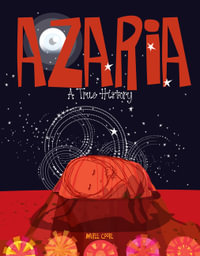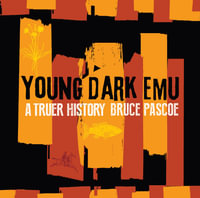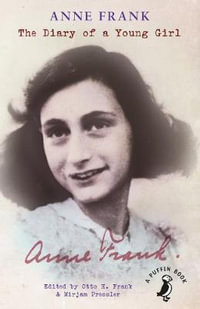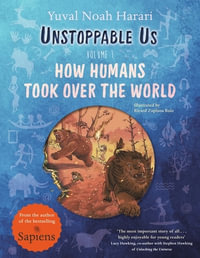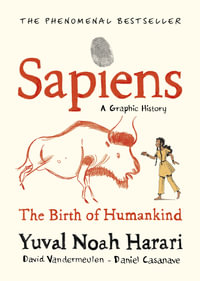
Behind the Bookcase
Miep Gies, Anne Frank, and the Hiding Place
By: Barbara Lowell, Valentina Toro (Illustrator)
Paperback | 1 September 2020
At a Glance
40 Pages
7+
2 - 6
27 x 22.5 x 0.5
Paperback
$25.25
or 4 interest-free payments of $6.31 with
Aims to ship in 10 to 15 business days
About the Author
Barbara Lowell is the author of several books for children, including Sparky & Spike: Charles Schulz and the Wildest, Smartest Dog Ever. Barbara lives in Tulsa, Oklahoma.
About the Illustrator
Valentina Toro is a graphic designer and children's book illustrator, with an MA in Creative Writing. Valentina has written several children's books in Colombia and has worked with authors from all over the world. She lives in Colombia.
Industry Reviews
Lowell's tale focuses on Miep Gies, the Dutch woman who helped Anne Frank and her family hide from the Nazis, then saved and preserved Frank's diary. After WWI, Gies was a malnourished child refugee from Austria; years later, this experience leads to her special relationship with Anne--Miep 'knew how it felt to be young and leave everything in your world behind.' Toro's illustrations use a muted palette; sharp, sketchy lines; and gently exaggerated shapes to convey tension, but also joy, as when Miep brings Anne a pair of red high heels to wear, 'a small moment of happiness.' Best suited for those already familiar with Frank's story; includes an author's note, bibliography, and further reading. -- Publishers Weekly
-- "Journal" (8/9/2020 12:00:00 AM)Sometimes history is chronicled in years. Sometimes it's chronicled in minutes.
Almost anyone who has been to Hebrew school and many who haven't know the basic facts of Anne Frank's life: Her family hid for two years in a tiny annex. The Nazis found them, in spite of all their secrecy. Anne left a diary that ensured generations of readers would never forget the lives lost in the Holocaust. This new biography mentions each of those facts, but it focuses on smaller moments: Anne's learning to walk, and then sashay, in high heels. Anne's decorating the walls, comically, with pictures of chimpanzees. The book focuses in particular on Miep Gies, the gentile woman who helped them and then found the diary, and some of the details about her childhood are startling. An Austrian refugee, she was taken in during World War I by Dutch strangers who then raised her. (Gies and all of the historical figures depicted have pale skin.) The focus on details is both the book's value and its chief flaw. It describes the moment-to-moment experience of life in an attic. Some of those moments are deeply moving, but some are mundane, a catalogs of pots and pans and dirty clothes. Readers may find the book a bit less heartbreaking then others on Frank because the larger history is so familiar. The main facts have been told many times in many books. Toro's illustrations, however, make every scene haunting, with dark shadows on the Franks' faces, as though they're covered with ash.
The story's familiarity takes away only some of its power and its urgency. -- Kirkus Reviews
-- "Journal" (6/30/2020 12:00:00 AM)This thoughtful new picture book recounts the main points of Anne Frank's life in hiding: where she hid, with whom, who helped them, how they were caught, and the later discovery and publication of her diary. Lowell stays true to the historical tragedy but also allows sensitive readers some distance by telling the story largely through the point of view of Miep Gies--a German Dutch employee of Anne's father, who helped hide the family--including several pages about Miep's own childhood. The main text also takes a gentle and indirect, but still clear, approach to Anne's death: 'Of all the people in the hiding place, only Mr. Frank returned from the concentration camps.' (For readers with questions, the author's note at the end provides more detail.) Similarly, Toro's soft, not-too-realistic illustrations focus on people and relationships, evoking emotions more than traumatic events. Even after the Franks are captured, illustrations of scattered possessions suggest rather than show violence. A historically accurate but relatively gentle introduction to the Holocaust for elementary-age readers. -- Miriam Aronin, Booklist
-- "Journal" (8/5/2020 12:00:00 AM)When the Nazis became a danger to Jewish people living in Amsterdam during World War II, Miep Gies helped hide Anne Frank and her family. After the Frank family's arrest, Gies rescued Anne's diary and returned it to Otto Frank after the war. Lowell was inspired by Gies's memoir to retell this story for young readers. The text summarizes the Frank family's experience in a chronological narrative. The prose is gentle enough to serve as a reader's first encounter with Holocaust literature. The narrative begins with a map and brief information about Nazi Germany and its threat to the Jewish community. Lowell explains, 'They stole the Dutch Jews' possessions, homes, and freedoms.'The author then introduces Gies, who was once a refugee. Gies's parents sent her to the Netherlands when she was 11 after Austria lost World War I. As an adult, she went to work for Otto Frank. She was one of only five people in the Frank office who knew of the hiding place upstairs. The narrative's straightforward tone may make it less effective for readers who liked Meeg Pincus's Miep and the Most Famous Diary: The Woman Who Rescued Anne Frank's Diary, which has a stronger emotional resonance, opening with the family's arrest and focusing more on Gies's relationship with Anne's diary. The subdued palette and old-fashioned look of Toro's illustrations support the text beautifully. Though the attic has windows and there are decorative touches, the sense of confinement is strong. An author's note adds information about the family's experience. VERDICT A solid, additional title that can serve as an introduction to Holocaust literature. - Kathleen Isaacs, Children's -Literature Specialist, Pasadena, MD
-- "Journal" (9/1/2020 12:00:00 AM)The sto-ry of how Miep Gies, along with oth-er busi-ness asso-ciates and friends of Anne Frank's father, coura-geous-ly hid his fam-i-ly from the Nazis is well known. After World War II end-ed, Gies returned to the Secret Annex and found the diary in which Anne had record-ed her expe-ri-ences and feel-ings. Gies pre-sent-ed Anne's father, Otto, with the diary, which he pub-lished in an edit-ed form. In Behind the Book-case, Bar-bara Low-ell and Valenti-na Toro approach Gies's sto-ry as one of per-son-al moral con-vic-tion and empa-thy, one with great sig-nif-i-cance for young read-ers today. The book's shared focus is on both Gies and Anne, defin-ing their sto-ry as one of friend-ship and shared suf-fer-ing. Author and illus-tra-tor do not deny Miep Gies's extra-or-di-nary hero-ism but frame it as a nat-ur-al response to the events of her life and the depth of her emo-tion-al involve-ment in her Jew-ish com-pa-tri-ots' tragedy.
Using spare and under-stat-ed lan-guage, Low-ell intro-duces back-ground infor-ma-tion about the Nazi occu-pa-tion of the Nether-lands and of Anne's time in hid-ing, before her fam-i-ly is betrayed and arrest-ed. The author refers to the ways in which Jew-ish lives 'had become unpre-dictable and dan-ger-ous, ' and how, in spite of great per-son-al risk, Miep Gies agrees to help the Franks and sev-er-al of their acquain-tances 'with-out hes-i-tat-ing.' Gies's par-ents had sent her from their home in Vien-na to Hol-land after World War I to escape pover-ty; the phys-i-cal depri-va-tion and lone-li-ness of her child-hood, and the wel-come she found with her Dutch fos-ter fam-i-ly, were a pro-found influ-ence on her choic-es as an adult. This nat-ur-al tran-si-tion from vul-ner-a-ble child to adult pro-tec-tor is a cen-tral part of Gies's path in life.
Lowell's details con-vey the har-row-ing bal-ance in Anne's life, as she tries to main-tain ele-ments of a nor-mal ado-les-cence under gross-ly dis-tort-ed con-di-tions. As a young woman, Gies is able to relate to Anne's emo-tion-al needs. In addi-tion to bring-ing news of the war, Gies admires Anne's col-lec-tion of movie star pho-tos and even brings her a pair of used red high heel shoes, rec-og-niz-ing the teen's need for beau-ty even under impos-si-ble con-di-tions. Gies and her hus-band even spend a night in the Secret Annex, as they need to inter-nal-ize emo-tion-al-ly the impris-oned Jews' adap-ta-tion to ter-ri-ble cir-cum-stances. Through-out the book, Gies strives to shel-ter Anne phys-i-cal-ly, but also to pre-serve for her, as far as pos-si-ble, a sem-blance of her for-mer freedom.
Valenti-na Toro's images are pow-er-ful. Her lim-it-ed col-or palette of blue, grey, and brown shades, along with her use of angles and space, are rem-i-nis-cent of expres-sion-ist the-ater. Pic-tures cap-ture the claus-tro-pho-bic con-di-tions of the Secret Annex. In one scene, Anne is seat-ed on the floor with her diary in the same cramped area where oth-ers read a news-pa-per while stand-ing, pre-pare food at a small counter, or hud-dle in a cor-ner. After the Jews have been betrayed by an infor-mant, anoth-er pic-ture depicts their legs descend-ing a stair-case to leave their sanc-tu-ary for-ev-er. There is a ghost-ly qual-i-ty to Toro's char-ac-ters, whose min-i-mal-ly sketched fea-tures are a fore-shad-ow-ing of their fate. The illus-tra-tions have a sym-bol-ic dimen-sion, with-out sac-ri-fic-ing his-tor-i-cal real-ism. Anne Frank, Miep Gies, and the oth-er Jews and their pro-tec-tors are trapped by the hor-rors of their time, but Low-ell and Toro grant them indi-vid-ual dig-ni-ty and meaning.
This high-ly rec-om-mend-ed book includes a detailed 'Author's Note, ' and sug-ges-tions for fur-ther reading. -- Emily Schneider, Jewish Book Council
-- "Website" (10/19/2020 12:00:00 AM)What most people don't know is that Anne Frank's famous diary is a gift to the world because of a woman by the name of Miep Gies. One of the protectors of the Frank family, Miep recovered the diary after the family was discovered by Nazis, and then returned it to Anne's father, Otto Frank, after World War II. Displaced from her own home as a child during World War I, Miep had great empathy for Anne, and she found ways (like talking about Hollywood gossip and fashion trends) to engage her. The story of their relationship (and the impending danger to the family in hiding) unfolds in this unique perspective of Anne Frank's widely known story. Exceptionally well written, illustrated, and presented for children ages 7-11, 'Behind the Bookcase: Miep Gies, Anne Frank, and the Hiding Place' is an extraordinary and unreservedly recommended addition to elementary school and community library picture book biography collections in general, and Anne Frank supplemental studies in particular. -- James A. Cox, Midwest Book Review
-- "Website" (1/18/2021 12:00:00 AM)While young readers may already be familiar with the iconic story of Anne Frank and her diary, they may not know much about the woman who saved the diary and cared for the Frank family in hiding -- Miep Gies, who escaped World War I Vienna on a Kindertransport to the Netherlands. A foster family with other children took her in and they moved to Amsterdam. Miep eventually became an employee of Otto Frank and grew close to his family. As the days of Nazi occupation and war closed in on the Dutch people, and Dutch Jews in particular, Miep helped the Franks find their hiding place behind the bookcase in Frank's place of business.
Lowell's straightforward prose and Valentina Toro's illustrations highlight the difficulties Miep and the Frank family faced. Lowell's useful author's note anticipates reader questions such as whether Miep ever saw her family again (she did). The illustration sometimes complements the text with greater nuance, often using a muted palette vis-a-vis the red of the Nazi flags. This book about Miep Gies joins those about Irena Sendler and Janusz Korczak in helping youngsters understand the acts of rescuers and their difficult decisions. -- Barbara Krasner, former member, Sydney Taylor Book Award Committee, Somerset, NJ, AJL
ISBN: 9781541557260
ISBN-10: 1541557263
Published: 1st September 2020
Format: Paperback
Language: English
Number of Pages: 40
Audience: Children
For Ages: 7+ years old
For Grades: 2 - 6
Publisher: Lerner Publishing Group
Country of Publication: US
Dimensions (cm): 27 x 22.5 x 0.5
Weight (kg): 0.19
Shipping
| Standard Shipping | Express Shipping | |
|---|---|---|
| Metro postcodes: | $9.99 | $14.95 |
| Regional postcodes: | $9.99 | $14.95 |
| Rural postcodes: | $9.99 | $14.95 |
How to return your order
At Booktopia, we offer hassle-free returns in accordance with our returns policy. If you wish to return an item, please get in touch with Booktopia Customer Care.
Additional postage charges may be applicable.
Defective items
If there is a problem with any of the items received for your order then the Booktopia Customer Care team is ready to assist you.
For more info please visit our Help Centre.

